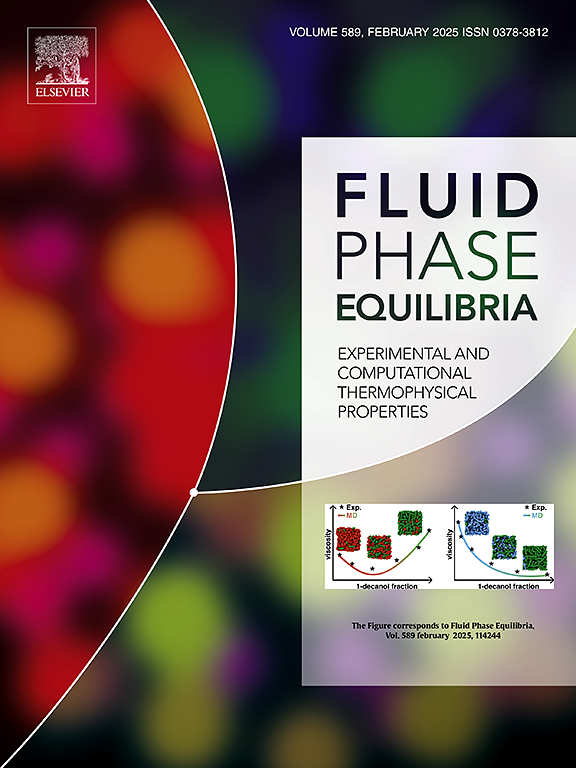压力对钠晶体熔化影响的MD模拟研究
IF 2.7
3区 工程技术
Q3 CHEMISTRY, PHYSICAL
引用次数: 0
摘要
采用分子动力学(MD)方法和EAM/FS电位研究了压力(1 kPa ~ 500 MPa)对碱金属钠晶体非平衡熔融过程的影响。得到了宏观物理参数如势能、体积和热容(Cp)随压力的变化,并利用RDF和PTM方法分析了熔炼过程中原子团簇的演化。通过宏观物理参数分析,得到了不同压力下的非平衡熔化温度T m和熔化时间Δtm。压力对钠的熔化行为有显著的影响,特别是在压力低于150mpa时。T′m随压力的增大而增大,在1 kPa ~ 500 MPa压力范围内,T′m变化范围为423 ~ 464 K,与实验数据一致。随着压力的增加,Δtm先减小后增大,在90 MPa时熔化时间最短为7.6 ps。RDF分析和PTM分析都能很好地描述钠熔融的相变过程,也表明T′m随压力的增加而增大。PTM分析方法可以有效地研究不同钠原子团簇(BCC、HCP、FCC和其他团簇)在钠熔化过程中的转变。研究发现,随着温度的升高,一些BCC团簇直接转变为Other团簇,而另一些则先转变为中间FCC和HCP团簇,然后再转变为Other团簇。采用PTM分析方法测定钠的T′m范围为425 K ~ 467 K,与Cp分析结果一致。在钠晶体熔化过程中,宏观物理参数的变化与原子团簇的演化有很好的对应关系。这两种变化都能揭示钠的熔融过程。通过MD模拟得到的与钠熔融有关的热力学参数可以为相对低压条件下钠的固液相变的应用和模拟提供理论支持。本文章由计算机程序翻译,如有差异,请以英文原文为准。
A MD simulation study on the influence of pressure on sodium crystal melting
The molecular dynamics (MD) method and EAM/FS potential are used to study the influence of pressure (1 kPa ∼ 500 MPa) on the non-equilibrium melting process of alkali metal sodium crystals. The changes in macroscopic physical parameters such as potential energy, volume, and heat capacity (Cp) with pressure are obtained, and the evolutions of atomic clusters during the melting process are analyzed by RDF and PTM methods. The non-equilibrium melting temperature (T'm) and melting time (Δtm) under different pressures are gotten by macroscopic physical parameters analysis. The pressure has a significant impact on the melting behavior of sodium, particularly at pressures below 150 MPa. The T'm increases with the increase of pressure, ranging from 423 K to 464 K within the pressure range of 1 kPa to 500 MPa, which is consistent with the experimental data. Besides, the Δtm first decreases and then increases with increasing pressure, and the shortest melting time is 7.6 ps at 90 MPa. Both RDF analysis and PTM analysis can describe the phase transition process of sodium melting, and also indicate that T'm increases with increasing pressure. The PTM analysis method can effectively study the transformation of different sodium atom clusters (BCC, HCP, FCC, and Other clusters) during the sodium melting process. It is found that as the temperature increased, some BCC clusters directly transform into Other clusters, while the others first transform into intermediate FCC and HCP clusters, and then into Other clusters. The range of T'm of sodium is determined to be 425 K ∼ 467 K using PTM analysis method, which is consistent with the results of Cp analysis. There is a good correspondence between the changes in macroscopic physical parameters and the evolution of the atomic clusters during the melting process of sodium crystals. Both of these changes can reveal the melting process of sodium. The thermodynamic parameters related to sodium melting obtained through the MD simulations can provide theoretical support for the applications and simulations of solid-liquid phase transition of sodium under relatively low-pressure conditions.
求助全文
通过发布文献求助,成功后即可免费获取论文全文。
去求助
来源期刊

Fluid Phase Equilibria
工程技术-工程:化工
CiteScore
5.30
自引率
15.40%
发文量
223
审稿时长
53 days
期刊介绍:
Fluid Phase Equilibria publishes high-quality papers dealing with experimental, theoretical, and applied research related to equilibrium and transport properties of fluids, solids, and interfaces. Subjects of interest include physical/phase and chemical equilibria; equilibrium and nonequilibrium thermophysical properties; fundamental thermodynamic relations; and stability. The systems central to the journal include pure substances and mixtures of organic and inorganic materials, including polymers, biochemicals, and surfactants with sufficient characterization of composition and purity for the results to be reproduced. Alloys are of interest only when thermodynamic studies are included, purely material studies will not be considered. In all cases, authors are expected to provide physical or chemical interpretations of the results.
Experimental research can include measurements under all conditions of temperature, pressure, and composition, including critical and supercritical. Measurements are to be associated with systems and conditions of fundamental or applied interest, and may not be only a collection of routine data, such as physical property or solubility measurements at limited pressures and temperatures close to ambient, or surfactant studies focussed strictly on micellisation or micelle structure. Papers reporting common data must be accompanied by new physical insights and/or contemporary or new theory or techniques.
 求助内容:
求助内容: 应助结果提醒方式:
应助结果提醒方式:


